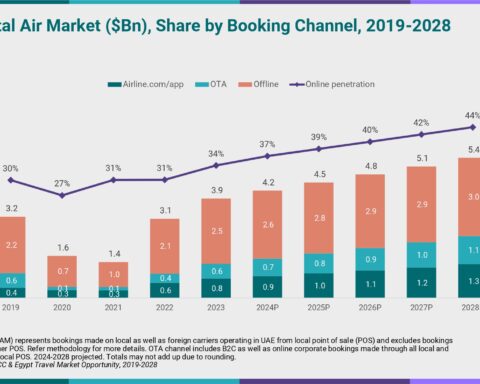AppsFlyer today unveiled a new report which reveals that UAE consumers are easily disenchanted by the mobile applications offered by brands — the majority (56.44%) of Android[1] applications are uninstalled within just 30 days of being downloaded. This figure is notably higher than that for more mature markets such as the United States and United Kingdom, where the average 30-day uninstall rate for Android apps stands at 46.76% and 47.82% respectively.
Commenting on the implications of the above-average rate of app uninstallation in the country, Paul Wright, General Manager Western Europe and MENAT at AppsFlyer said, “Research we conducted in early 2023 indicated that the vast majority (84%) of UAE business believe that mobile apps are a ‘must’ to stay relevant to their customers and consequently 9 in 10 UAE businesses now offer an app as a means of engaging with customers. However, as our latest research shows, earning, and then maintaining, a spot on customers’ smartphones is becoming immensely difficult. The harsh reality is that with a multitude of competitors and rising user expectations, apps that fail to deliver quickly and effectively are at an increasing risk of being uninstalled.”
The company also shed light on which types of apps are most susceptible to rapid changes in user perceptions. Looking at non-organic installs — driven by successful conversions of marketing efforts — Lifestyle apps fared the poorest with 86% being deleted within 30 days. Even the top 10% of these applications suffered an uninstall rate of 50%. Interestingly, Finance, Shopping, and Food & Beverage applications all showed high uninstall rates for non-organic downloads at 70%, 66% and 62% respectively.
These figures were all significantly better for apps that had been organically downloaded by users. In these instances, just over half (52%) of Lifestyle apps remained on users’ smart devices for over 30 days, while 58% of Finance apps, 64% of shopping apps and 46% of Food & Beverage apps achieved this desirable outcome. “Organic users have higher intent than non-organic users and therefore it is no surprise that across categories, their uninstall rate is much lower. That said, in the Middle East, for Android, non-organic instals account for the larger portion (55%) of all app installs. This significance of non-organic install cannot be overlooked. Rather, mobile marketers should recognise that their efforts cannot stop at simply driving installs. They need to work with other stakeholders to ensure that hard earned users are retained as this will yield greater ROIs on their campaign investments,” explained Wright.
To enable app marketers to plan user retention campaigns more effectively, AppsFlyer worked to pinpoint exactly when users are dropping off the most. Globally, the company’s data shows that the first day is when most users uninstall apps, likely the result of unmet expectations or false promises. Although all verticals display a similar trend over the first 30 days, Finance apps set the pace early on with 23% higher day 1 rates compared to the average of other verticals.
“As the highest uninstall rate occurs on the first day, nailing the onboarding process becomes paramount. To reduce the uninstall rate within the first day and the first week, brands must ensure a seamless and engaging onboarding experience that fosters a strong and lasting connection with users,” said Wright. “Moreover, as these high uninstall rates for UAE consumers demonstrate, brands should avoid over-promising in an attempt to maximise downloads, as it can lead to frustration and potentially damage your brand irreparably.”









